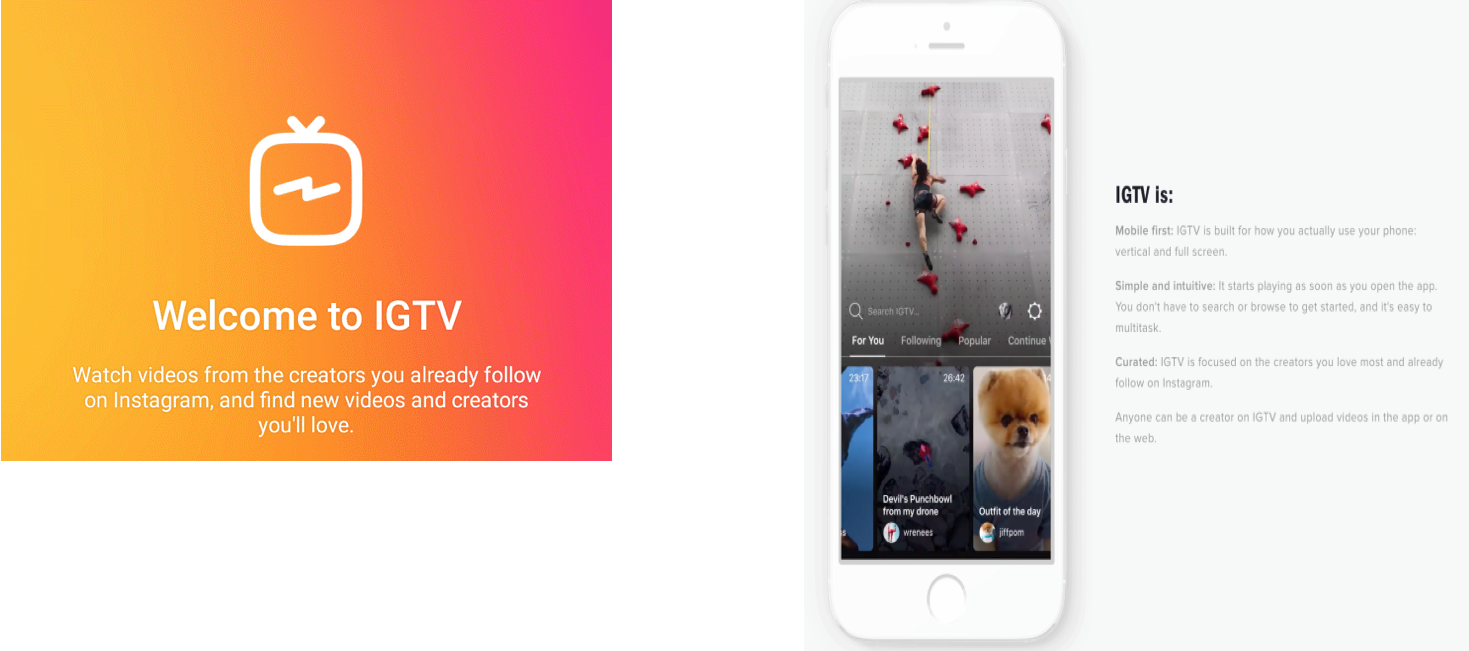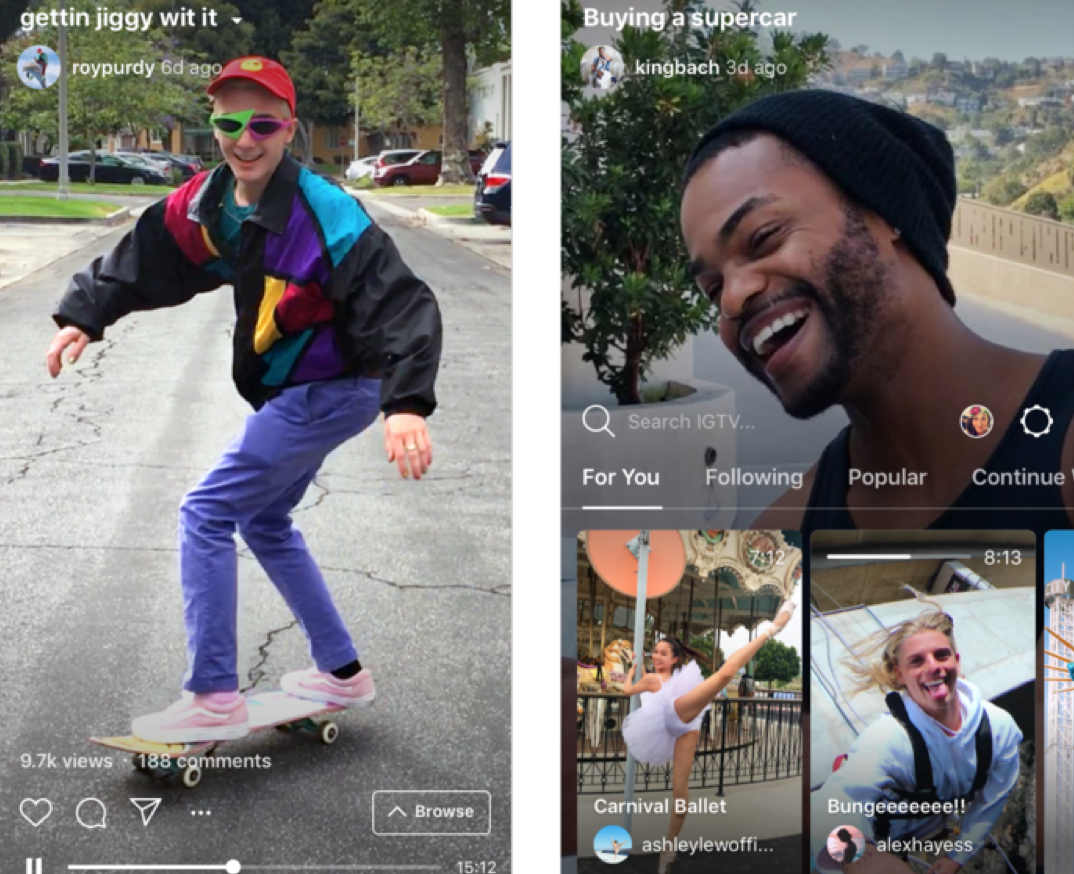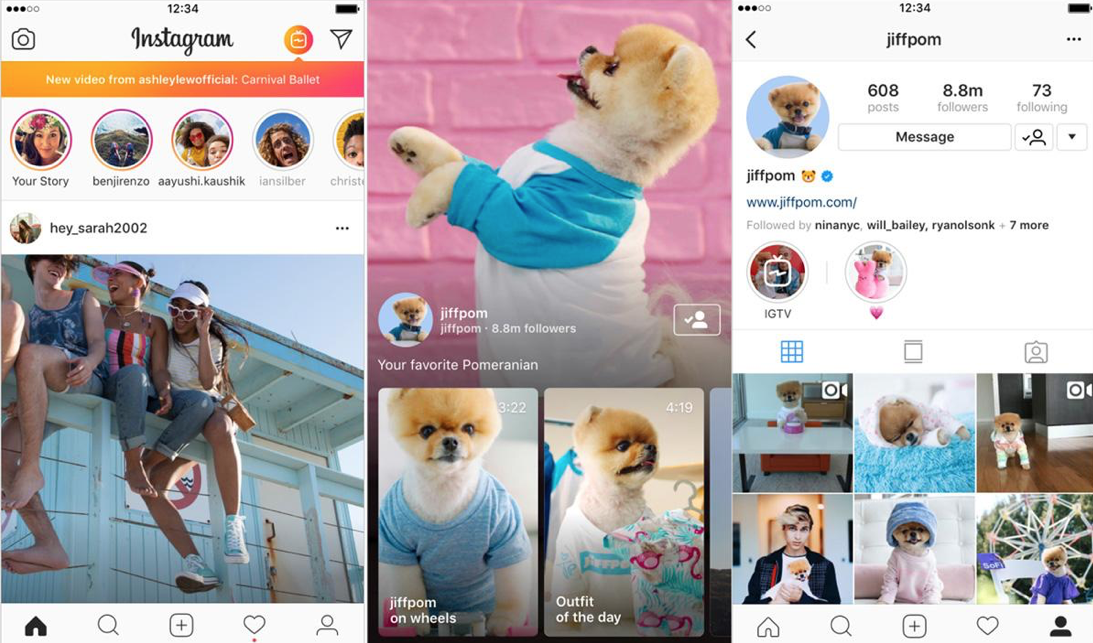As you may know, video content is the hottest trend in social media right now. A territory dominated by Generation Z who have grown up as digital natives – never experiencing what it was like to navigate with a map or listen to a Walkman. (Feel old yet?)
According to a recent Pew Research Center study, 85% of teens say they use YouTube – making it the most popular social media platform. That means beating out all other digital behemoths like Facebook, Snapchat, and Instagram. And an Adweek study found that half of Gen Z-ers “can’t live without YouTube.”
The overwhelming popularity of video content is changing the social media landscape as platforms try to replicate YouTube’s formula for success via long-form video. The question remains, can they do it?

Call Me on Your Video Phone
With Americans’ trust in mass media at an all-time low, digital natives are turning away from mainstream sources such as TV and radio to seek real connections from real people. The vlog (video blog) popularized on YouTube appeals to consumers who crave authenticity. Vlogs offer a window into people’s lives — and are just flat-out entertaining.
On social media, video helps us communicate in a more personalized and nuanced way than just a simple image or text-based post can. This is why marketers are increasingly switching to more video-centric content strategies for brand promotion. Social video content removes the middle man, directly connecting the consumer with the creator of the media, and this, my friends, is the future of entertainment and marketing.
Long-Form Video Gaining (Remote) Control
Let’s take a look at Instagram. What began as the perfect place to post photos of your latte art has developed into ephemeral glimpses into daily life with Instagram Stories. Inspired by Snapchat Stories, Instagram implemented their own Stories feature in 2016 to allow users to post photos and videos that disappear after 24 hours.
In the last few years, audience viewing habits on social media have shifted from short, bite-sized videos to longer videos. In Q1 of 2018, 54% of smartphone video consumption was spent on long-form video content (20+ minutes), dethroning the short-form videos (5 minutes or less) that reigned king just 2 years ago.
So, Instagram decided to answer to that trend by expanding into “TV”. Not exactly like the black box in our living rooms with a remote control and TV guide, but a solve for the new way users want to watch TV – on their phones, vertically. Introducing, IGTV.

What’s the different between IGTV and Stories? It’s basically the long-form video version. Where Instagram Stories displays vertical video segments in 15-second increments, IGTV offers users the ability to upload vertical videos up to one-hour long. You can find IGTV in the Instagram app at the top right corner by your DM’s, but you can also download a dedicated IGTV app from the App Store. Users can navigate through IGTV with tabs such as, “For you,” “Following,” “Popular,” and “Continue Watching” to discover videos from their favorite creators.
Recognizing this trend (and realizing they can rack up more ad dollars from displaying multiple mid-roll ads), YouTube updated its recommendation algorithm to prioritize longer videos. Facebook has also found that longer videos garner 79% more shares and 74% more views, so the company has changed their News Feed algorithm accordingly. The launch of IGTV shows that Instagram wants in on the fun (and $$$) too.

To IGTV or Not IGTV? That is the Question
Still in its infancy, the success of IGTV is yet to be determined. Just after Instagram’s announcement, many business journals and news outlets were excited about the prospect of IGTV. Forbes claimed that, “IGTV may very well change the way that TV is consumed for future generations.” It could potentially inspire a complete transition to mobile entertainment, an idea that users under 25 could really get behind. While Instagram has not yet announced monetization of videos or advertisements (AKA influencer bread and butter), the eventual integration of this could reinforce IGTV as a top target for influencers and marketers.
Despite all of the positive press, the most widely mentioned critique of Instagram’s newest innovation is that it’s just a knock-off of YouTube. (Of course, Instagram Stories started off as a knock-off of Snapchat Stories, but have since taken on a life of their own and surpassed Snapchat in popularity). Adweek has criticized the shortcomings of IGTV as a YouTube competitor, citing user experience issues that make it all too easy for distracted viewers to navigate away from long videos. Plus, since IGTV never had a soft launch with premium content from brands and creators, many users lack clarity about how to best use this feature, treating it as interchangeable with Stories or Instagram Live.
“We have to wait for people to adopt it, and that takes time,” outgoing Instagram CEO Kevin Systrom said in a recent interview with TechCrunch, explaining the slow pace of IGTV’s growth.

Although adoption has been slow, some media companies are excited to be the trailblazers of IGTV. DigiDay analyzed the future of IGTV with a case study of magazine publisher Meredith’s decision to pilot 10 new long-form series for the application. Meredith with be drawing funding from advertisers to sponsor shows such as a Travel + Leisure series about travelling Insta influencers and a Real Simple series about commuter beauty tips. The Meredith take on IGTV is relatively simple: why not test out a new social media opportunity? If it takes off in the next 3 quarters, then they’re ahead of the pack, and if not, Meredith has still expanded their content repertoire, which can easily be repurposed for other platforms.
The future of IGTV may still be hazy, but its creation represents a new emphasis on long-form video for both social media platforms and the brands who use them. Whether your brand is experimenting with IGTV or sticking with tried-and-true options like YouTube, long-form video is a can’t-miss opportunity to connect with today’s audiences thirsty for more content.
If you’re ready to expand your long-form video efforts, the CBC team is here to help! Our revolutionary content studio, Sidebar, produces engaging video content optimized for social media. Intrigued? Let’s talk.
